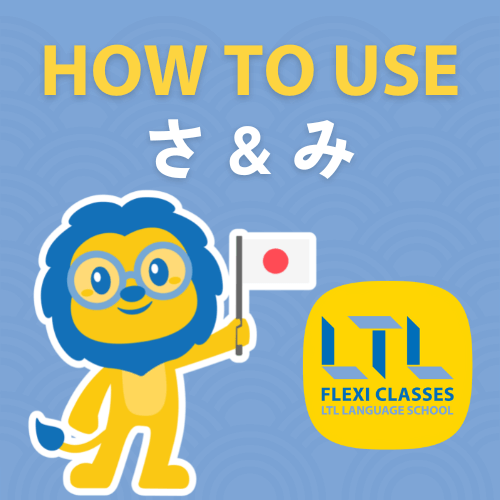N5 Grammar | How to Use の, the Possessive Particle
Welcome to this quick fire lesson on how to use の, the Japanese possessive particle.
Its usage is very simple and you’ll master it in no time.
The Japanese language uses several particles you need to learn in the early stages of your language learning journey, such as:
Check out our Introduction to Japanese Particles to get an overview of the 15 most important particles for beginners.
How to use の | Basic structure
How to use の | Describing a noun
How to use の | With other particles
How to use の | FAQ’s

How to use の | Basic Structure
When particle の (no) is added to a noun, it creates a relationship between those two nouns.
の (no) is the particle used to indicate ownership or association.
We add the particle の to show the possession of something. It is like adding ‘s to the end of a word, or saying his/her/their.
Let’s see some examples:
| Kanji | Hiragana | Romaji | English |
|---|---|---|---|
| 彼の帽子 | かれのぼうし | kare no boushi | His hat |
| 犬の毛 | いぬのけ | inu no ke | Dog’s fur |
| だれの本ですか | だれのほんですか | dare no hon desuka | Whose book is it? |
Sometimes, the second noun (the “possessed” noun) can be omitted if it has already been established within the context. In response to that last sentence, for example, someone could say:
| 彼のです | かれのです | kare no desu | it is his |
It would be implied from the context that the speaker is talking about the book.
At other times, the “possessed” item might be stated in the sentence, but not directly attached to its “possessor”, like this:
| この車は私のです。 | このくるまはわたし のです。 | kono kuruma wa watashi no desu. | This car is mine. |
How to use の | To describe a noun
The particle の does not always indicate possession.
In some instances, の can translate roughly to “of” or “from”, or can simply be describing the noun that comes next.
| Kanji | Hiragana | Romaji | English |
|---|---|---|---|
| イタリアの車 | いたりあのくるま | itaria no kuruma | An Italian car (a car from Italy) |
| 英語の勉強 | えいごのべんきょう | eigo no benkyou | The study of English |
| 金の時計 | きんのとけい | kin no tokei | A golden watch |
| 科学の授業 | かがくのじゅぎょう | kagaku no jugyou | Science class |
And it can also be used to rename a noun.
| 友だちのエリンさん | ともだちのえりんさ ん | tomodachi no erin san | My friend Erin |
This example isn’t stating possession or that something is of, from, or about something. It is giving a name to the previously stated noun. This is similar to the appositive in English.
How to use の | With other particles
の can also be attached to certain other particles.
It has the same effect of describing the noun that comes after it.
| 社長との会話 | しゃちょうとのかい わ | shachou to no kaiwa | A conversation with the manager |
The meaning of particle と is unchanged; it still means “with” here in this context.
By adding particle の, we are able to describe the noun that comes next. Without this particle の to bind them, it would translate as, “a manager and a conversation,” not, “a conversation with the manager.”
It can be used like this with particle へ and で as well.
| 北へのバス | きたへのばす | kita he no basu | The bus going north |
| 学校での会議 | がっこうでのかいぎ | gakkou de no kaigi | The assembly at school |
へ is showing direction, and で is showing the place where and action occurs, and by adding の, the phrase turns into a noun modifier that describes the thing that comes next.
There is no limit to how many modifiers we can chain together:
| 私の母の友だちの姉の夫 | わたしのははのともだちのあねのおっと | watashi no haha no tomodachi no ane no otto | My mother’s friend’s sister’s husband |
It is important though to remember that each の is acting to modify the next thing that comes after it.
Ultimately, it is the final noun in the chain that we are talking about.
In the above example, it is the husband. We are just describing which husband it is (my mother’s friend’s sister’s).

Are you a Flexi Classes student already?
Learn more about the Japanese Possessive Marker in the following Flexi lessons:
My Father Is A Teacher (Intro)
What Is Your Job? (A1, Chapter 1)
Misa’s Book (A1, Chapter 2)
Not a Flexi Student yet?
Here you go! That was easy, wasn’t it?
Did you know we have a Japanese Grammar Bank full of useful lessons for all levels?
If you are studying Chinese, we also have a Chinese Grammar Bank!
Speaking of learning multiple languages, have a look into our Flexi Classes!
We offer online individual and group lessons for 10 languages, classes are available 24/7.
FREQUENTLY ASKED QUESTIONS
What is の?
の is a possessive particle used in the Japanese language.
How to use の?
の is used to connect to nouns.
Noun + の + noun
Any sentence examples with の?
彼の帽子 | His hat
犬の毛 | Dog’s fur
だれの本ですか | Whose book is this?
What are the Japanese subject and object particles?
The Japanese subject particle is が, and object particle を.
You can learn more about each of them in our Japanese Grammar Bank.
Where can I have a look at ALL of the Japanese particles?
Check out our Introduction to Japanese Particles to get an overview of the 15 most important particles for beginners.
Where to study Japanese?
You can learn Japanese with LTL, both online and offline.
Study 24/7 on Flexi Classes, our online teaching platform where you can choose what, when and how to learn. We have a 7 Day Free Trial!
We now also offer Japanese courses in person, in Tokyo! Choose between group or individual classes, and live with a homestay family while you’re in Japan.









